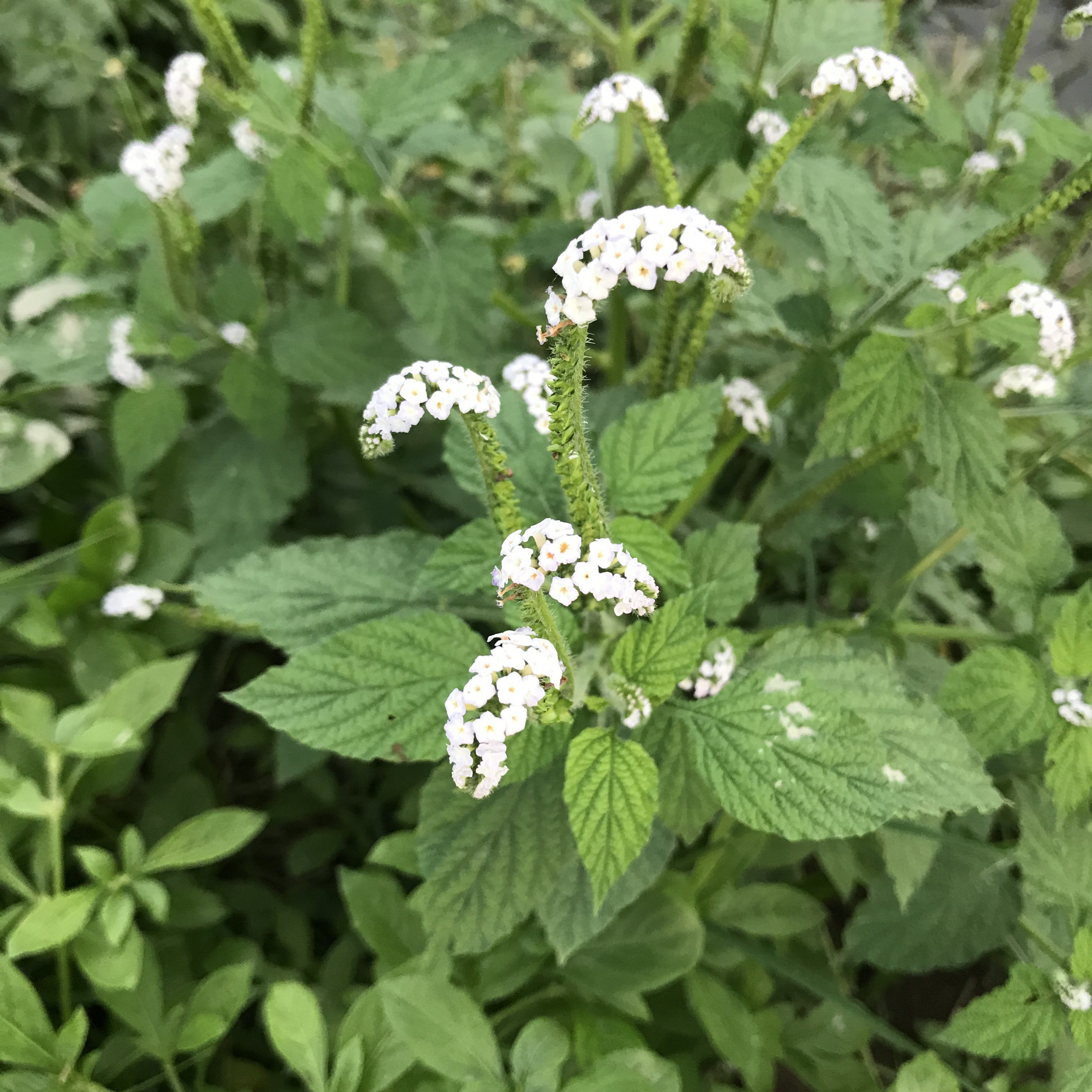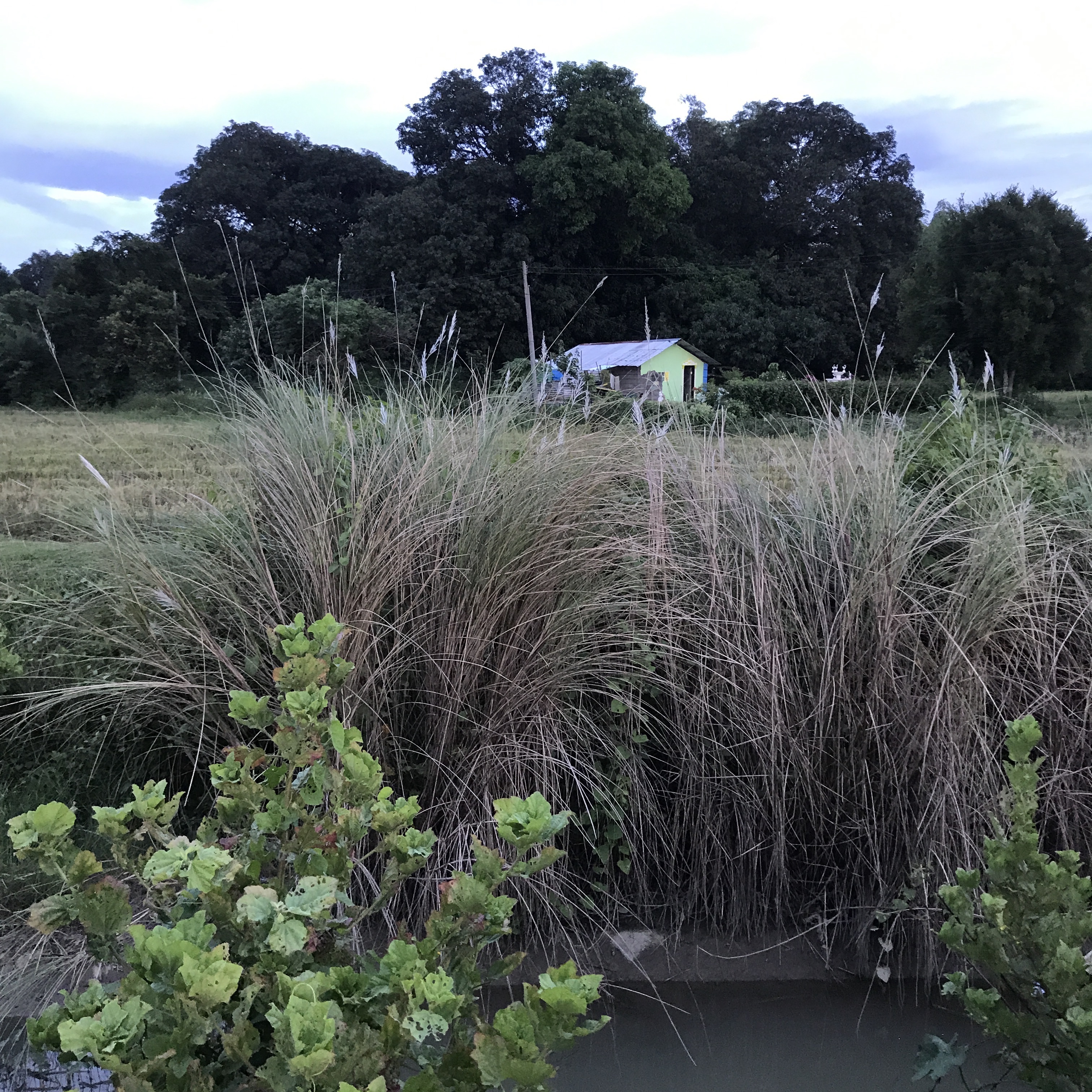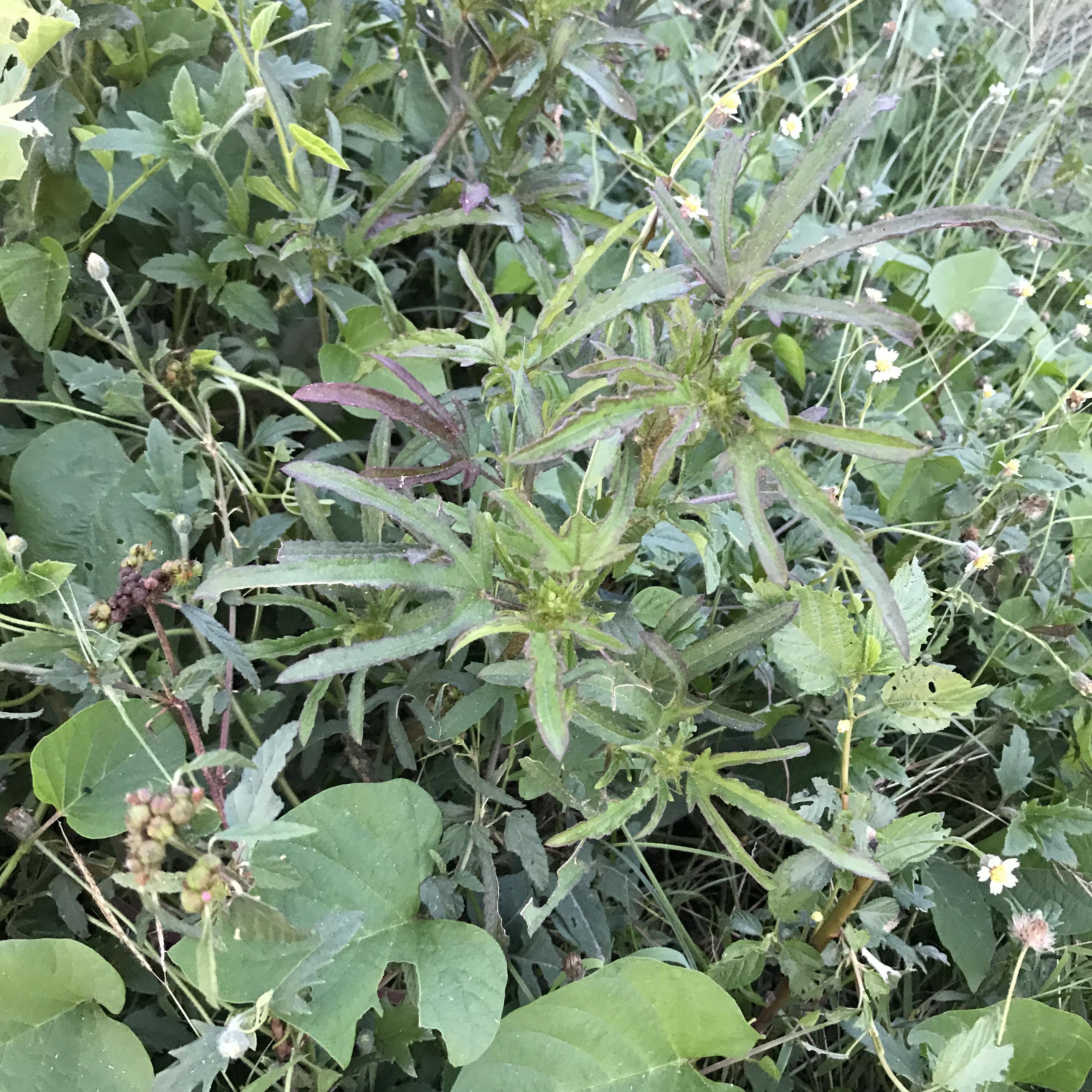AM
Low cumulus clouds at southeast
Stratocumulus clouds mostly in the sky
Maria cafra loves to perch on single sticks
I can smell the smell of cut grass around a kubota machine
The kamoteng kahoy grows fast. It was cut a few months ago. It’s in full blossom now.
For my walks to be fruitful they need to be slow, calm, gentle, restful, quiet. I could include some cardio at the beginning and end. But if time is limited, I’d rather not have cardio. This is why, in an ideal day where everything is included in my routine, I should get out early.

If I would give my guess. I think this field was once part of the river. And during dog days continuous rain, it sure takes on its river dress.
PM

No more pink eggs of snails.
How many species here (Sitio Buyan Road)?
- Banana
- Bamboo
- A tree that looks like malunggay but smaller leaves (acacia or ipil-ipil?)
- Kamoteng kahoy
- Wild kamote
- That small bush typical along fields, which has leaves that look like green maple leaves with a few autumn red leaves. This one can actually grow taller. Half of my height perhaps.
- The small vine-like grass with a small white flower (this is actually the same plant I took a photo of a while ago, with a flower that curls and is white). This is the conqueror of this path. It has dominated it. According to Nature ID, this is most probably Heliotropium angiospermum (Scorpion’s tail) or Heliotropium indicum (Indian heliotrope). It’s most probably the latter because, unlike the former, the plant I saw in the field has hairy stems.


- Description from Wikipedia:
- Heliotropium indicum, commonly known as Indian heliotrope, Indian Turnsole is an annual, hirsute plant that is a common weed in waste places and settled areas. It is native to Asia. It is widely used in native medicine in Tamil Nadu, India.
- Indian heliotrope is an annual, erect, branched plant that can grow to a height of about 15–50 cm (5.9–19.7 in). It has a hairy stem, bearing alternating ovate to oblong-ovate leaves. It has small white or purple flowers with a green calyx; five stamens borne on a corolla tube; a terminal style; and a four-lobed ovary.
- The plant is native to Asia. A common weed in waste places and settled areas.
- In the Philippines, the plant is chiefly used as a traditional medicine. The extracted juice from the pounded leaves of the plants is used on wounds, skin ulcers and furuncles. The juice is also used as an eye drop for conjunctivitis. The pounded leaves are used as poultice.
- Heliotropium indicum contains tumorigenic pyrrolizidine alkaloids.
- More info
- Tall grass (this is talahib. But why am I only noticing it now? Does it only grow at this time? October? There’s talahib on this path all along. I thought talahib only grows along rivers. But this is connected to rivers anyway. Does the river disperse their seeds?)

- Saluyot
- Probably Spanish needles but I’m skeptical. No flower and the finger of leaves are longer.

Sky reading (5:52 pm)
- Low cumulus clouds covering cordillera.
- Some altocumulus
- Lots of low cumulus clouds at northwest
- Altostratus above the mountain ranges in Western Pangasinan.
- Southwest completely covered by low stratus and stratocumulus clouds
- A single visible star or perhaps it’s Venus